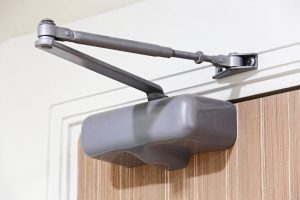What is Damping?
I am starting with a big question today :)
…and to answer this question, we have to understand a few things about dynamic analysis first…
Because only a part moving in some way experiences damping…
Damping is basically an attenuation of this movement due to some kind of friction
If you hadn’t any damping in the world, it would cause a lot of problems…
Imagine you launch a ball with a certain force, on the ground.
Theoretically, if the initial force is the only force applied, the ball should continue to roll without stopping…
But in reality, we know that the ball won’t continue forever to roll, it will stop after some time.
Why does the ball stops?
Because there is a counter force of friction which applies itself at the contact between the ball and the ground.
A ball can actually roll a long time, because the contact surface is extremely small.
Imagine now that you want to do the same thing with a cube…
The friction would be so huge that it would stop almost immediately.
Damping is basically the same thing… friction is only one example of dynamic system damping.
You can have viscous damping… Damping due to a liquid (water, air…), etc…
Is Damping Beneficial or Harmful to my system?
If your purpose is to get the ball rolling for a long time, then damping can obviously play against you…
But if your purpose is to protect the system by attenuation the movement, then Damping can also be good!
I guess everyone understands why a “damper” is usually installed on the doors of buildings ;-)
(No ones like the sound of a smashing door which doesn’t have a damper… the one is my building just broke, that’s why I am telling that ;-) )
Same for dampers installed in between the slab and the piles of bridges…
You also have big balls placed on the top floor of some buildings in Japan to damp the seismic vibrations and protect the structures.
Damping is a great way to limit the vibrations
We use a lot « static » analysis in FEA… but in reality, most of the dangerous phenomena which are dangerous are dynamic…
That’s why a basic dynamic analysis is the « modal » analysis which uncovers the core mode of vibrations which can potentially create problems when excited by some dynamic load (the wind or seismic vibrations…)
I wrote a full detailed article about modal analysis in the past, so I won’t describe it in details here…but if you are interested, you can check that article here:
So, let’s say that you have a dynamic sinusoidal load exciting your structure at the exact frequency… what would happen?
Well… theoretically, the displacements would become higher and higher until the structure breaks…
(it makes me shiver to think about it…)
We had that happening in the past (Tacoma bridge)… that’s why engineers have been working on solutions since a long time:
And there are mainly 2 solutions here:
1- Try to shift the normal frequencies of the structure by changing its design and the way the weight is distributed…making sure that the new changed frequencies aren’t close to the frequency of the potentially harmful dynamic loadings (the wind…)
2- Add some damping to make sure that even excited at a harmful frequency, the displacements won’t go higher and higher but will be limited at a certain value.
Want to know a bit more about dynamic analysis and damping?
Check out my free FEA guide about Dynamic analysis and damping:
That’s all for today, hope you understand better now what is damping!
Obviously, there is more to know about damping… like the different kind of damping and how to consider it in your FEA dynamic simulation… but that will be for next time!
–Cyprien
PS: If you like what I write, subscribe to the newsletter and help me to spread the knowledge by sharing this article! We all win by learning from each other and making the engineering knowledge more accessible :-) THANK YOU!
Another article that might interest you:











That’s good for understanding, damping cannot be easily attributed, it’s not just the friction or gravity or some one type of force that reduces the motion. Damping is good for the static members subjected to dynamic loads but bad for mechanical instruments as this will reduce the efficiency. However still lots of research is required to understand and attribute the damping behavior.
Thank you for the brief description. Very well explained
Good to understand!
Thanks for your explanation,
the description with a big ball on the top floor of some buildings,
I believed that you are talking about the damper of Taipei 101 which in Taiwan.
Again, thank you for giving an example of that.